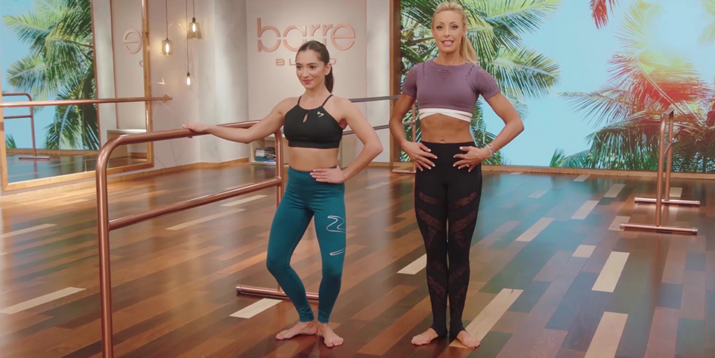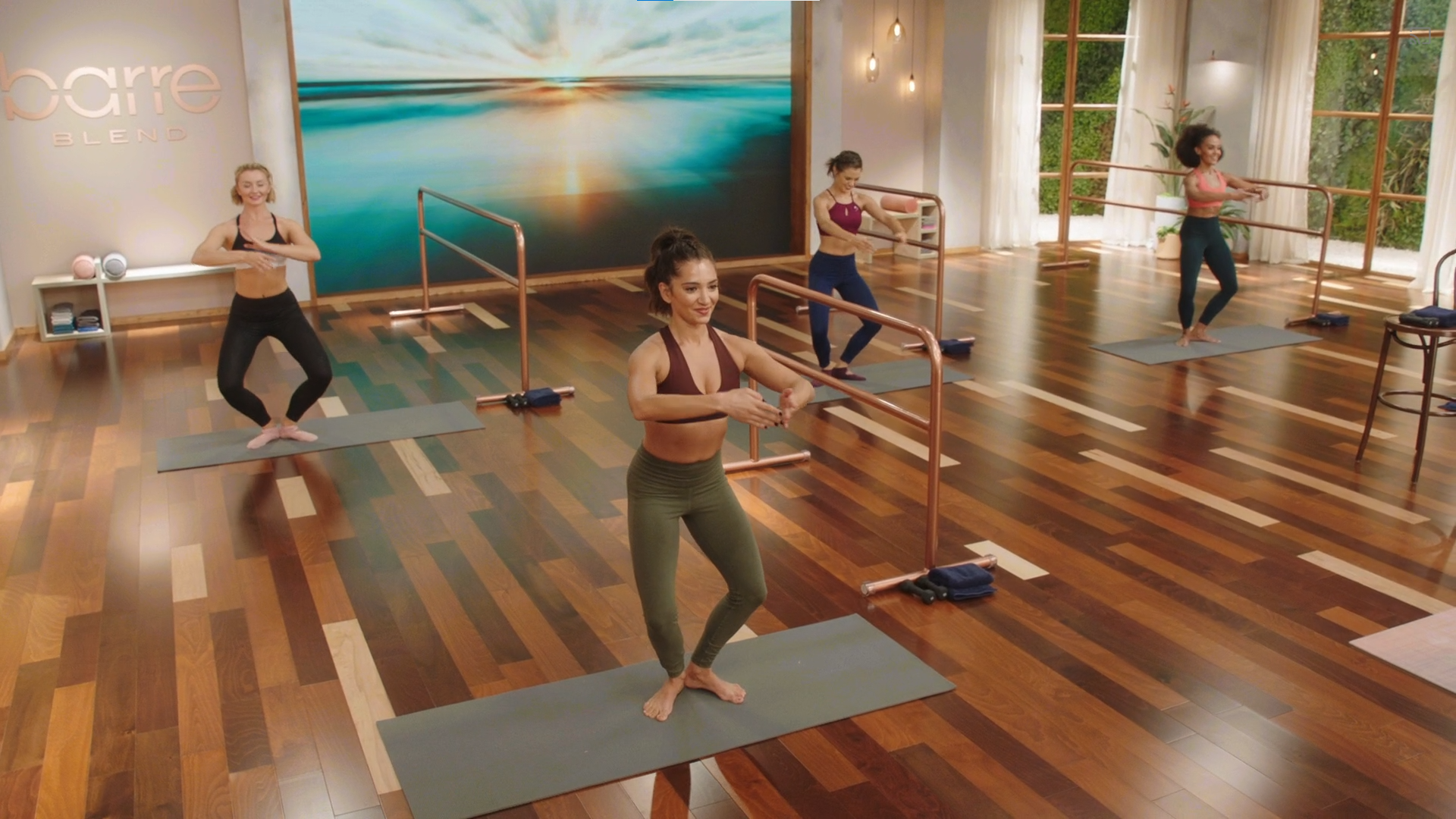How to Do a Plié With Barre Blend Creator Elise Joan

A plié (pronounced plee-AY) is as simple as bending your knees — and yet, this foundational movement really isn’t that simple.
When translated from French, plié means “bend” or “bending.” It’s a staple movement in ballet and many barre workouts, like Barre Blend and Xtend Barre.
In these workouts, you’ll need to know how to do a plié properly, as it’s a foundation for more advanced movements.
Here’s what you need to know about the plié and how to perform one with perfect form.
Demi Plié: Step-by-Step Instructions
In a demi plié, you bend your knees as deep as you can without your heels leaving the floor.
- Stand tall with your feet together and your toes pointing forward holding onto a barre or sturdy high chair.
- Shift your weight towards your heels, and then rotate your legs out from your hips so your toes point out to the sides as far as they can go without discomfort. In ballet, this is first position.
- Keeping your spine neutral and your core engaged, bend your knees — which should track over the middle of your feet, instead of caving in or bowing out — until you feel your heels start to lift off the ground.
- Press through your heels, activating your hamstrings and glutes, to straighten your legs and return to first position.
Grande Plié: Step-by-Step Instructions
A grande plié requires a deeper bend in which, unlike with the demi plié, your heels come off the floor, requiring you to balance on the balls of your feet.
- Stand tall with your feet together and your toes pointing forward holding onto a barre or sturdy high chair.
- Assume first position: shift your weight toward your heels, and then turn your legs out from your hips so your toes point out to the sides as far as they can go without discomfort.
- Keeping your spine neutral and your core engaged, bend your knees — which should track over the middle of your feet, instead of caving in or bowing out — until your heels lift off the ground.
- Lower your hips as deep as you can, then press through the balls of your feet, activating your glutes and quads, to straighten your legs and return to first position.
Plié Alignment Tips
The most important element of a plié is alignment: Your feet, knees, hips, spine, shoulders, and head must all be placed in proper alignment to truly get all the benefits and strengthening a plié has to offer and avoid injury.
Here are some form tips to improve your plié.
- Turn your feet out to whatever degree allows you to perform the entire movement without discomfort.
- Distribute your weight evenly between your right and left foot, the front and back of your foot, and the inside and outside of your foot.
- Engage your inner thighs to keep your knees tracking over the middle of your foot. Reduce your range of motion if you feel them caving in or bowing out.
- Avoid hunching your back or sticking your tailbone out — you should maintain neutral spine.
- Make sure your abs are engaged as you bend and straighten your legs.
Plié Benefits

Practicing the plié provides many benefits in barre workouts and beyond:
